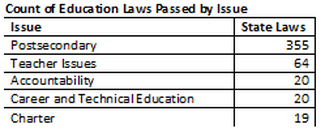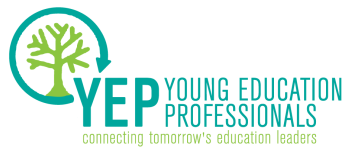|
Teachers unions have announced they will spend more than ever in the upcoming election—for the National Education Association, $40 to $60 million this cycle, and for the American Federation of Teachers, $20 million. That makes education unions among the biggest spenders this election. The donations also provide insight into how one of the most active education interest groups reads the politics of school reform.
0 Comments
Many of the 43 states and the District of Columbia with No Child Left Behind waivers may be starting to believe they are more trouble than they are worth. While they spend a lot of time running their plans by the U.S. Department of Education, states without waivers have greater flexibility to implement their preferred policies — and they can negotiate more freely for education reforms and services without worrying about pleasing the feds.  (Click on image to see the original, full-screen version at Education Week.) (Click on image to see the original, full-screen version at Education Week.) States without waivers report very few downsides (which runs counter to the predictions of disaster that many experts made years ago). States without waivers must send a letter to parents explaining that their child’s school is failing, and they also have to spend a portion of their federal education aid on tutoring and school choice. They see little benefit to the waivers at all. But states with waivers should work with the U.S. Department of Education to renew them. Here’s why: While Congress has spent much of its time gridlocked, state legislatures moved forward with a host of education issues this session — everything from teacher accountability to community college aid. They passed hundreds of bills before ending their lawmaking sessions in early July. Could all of this state action signify some eventual movement in Congress? Using data from Congress and the National Conference of State Legislatures, I found that state legislators have enacted more than 600 bills this legislative session. To better understand these changes, I also calculated the sum of education laws by NCSL education policy topics, which you can see below. (It’s important to note that not all laws create equal levels of change. For example, it’s possible for one law to change the name of a gymnasium and another to create a new teacher evaluation system.) This approach allows for a view into nationwide trends among states, but it doesn’t explain whether these were small or large changes in 2014.  In total, 44 states passed 624 laws relating to education, including primary, secondary, and higher education, this year. Washington (48), Virginia (38), and California (37) passed the greatest number of education laws, and by far, postsecondary education issues dominated legislative action. Some of the new laws provide more scholarship opportunities, make it easier to take classes online, and improve affordability at community colleges. It seems that growing concerns over student debt and general anxieties about the health of the economy are also catching the attention of state lawmakers. |
aboutYEP-DC is a nonpartisan group of education professionals who work in research, policy, and practice – and even outside of education. The views expressed here are only those of the attributed author, not YEP-DC. This blog aims to provide a forum for our group’s varied opinions. It also serves as an opportunity for many more professionals in DC and beyond to participate in the ongoing education conversation. We hope you chime in, but we ask that you do so in a considerate, respectful manner. We reserve the right to modify or delete any content or comments. For any more information or for an opportunity to blog, contact us via one of the methods below. BloggersMONICA GRAY is co-founder & president of DreamWakers, an edtech nonprofit. She writes on education innovation and poverty. Archives
May 2017
Categories
All
|
| Search this site |
© Young Education Professionals. All rights reserved.
Logo designed by Aram Designs
Website created using Weebly
Logo designed by Aram Designs
Website created using Weebly

 RSS Feed
RSS Feed